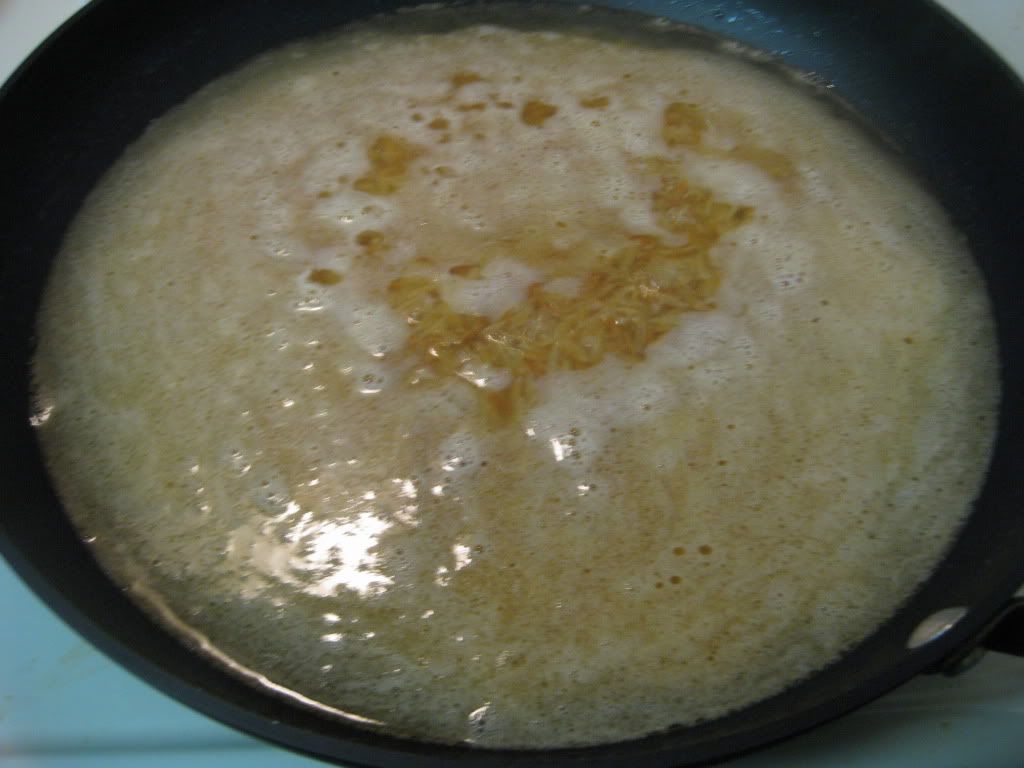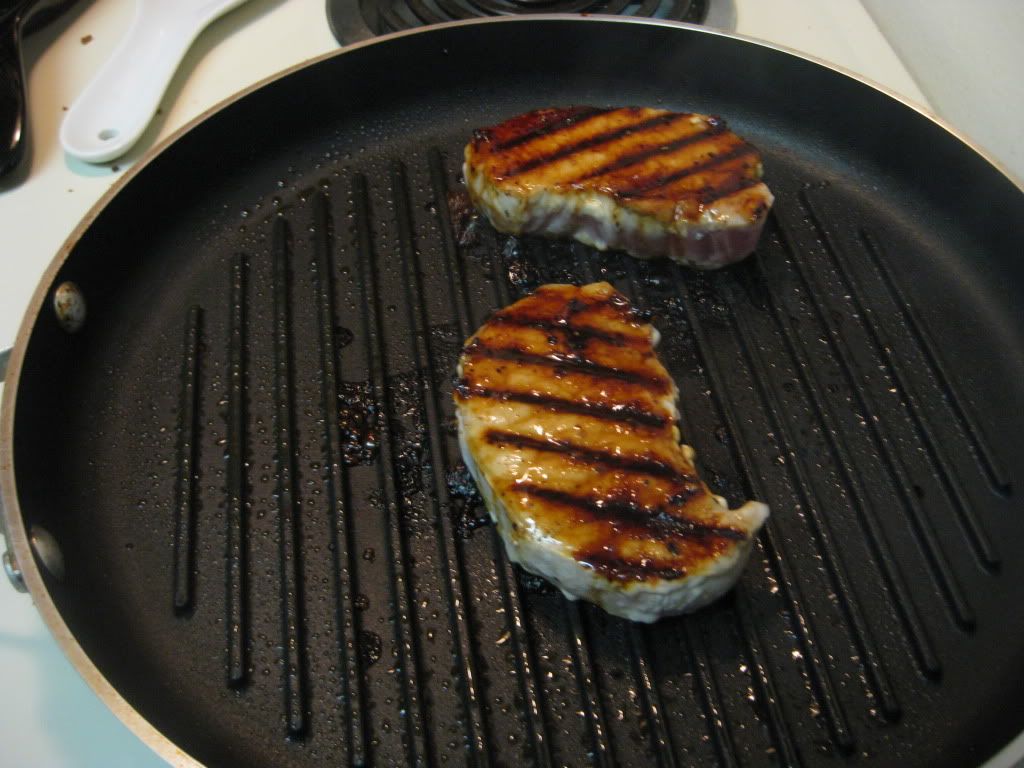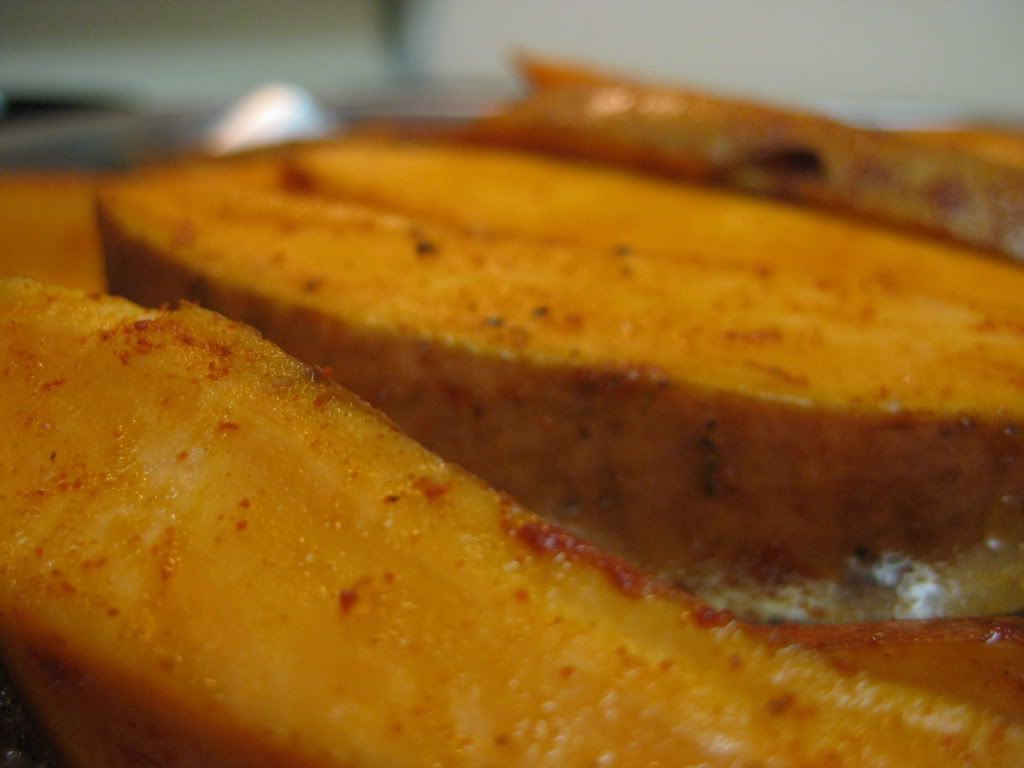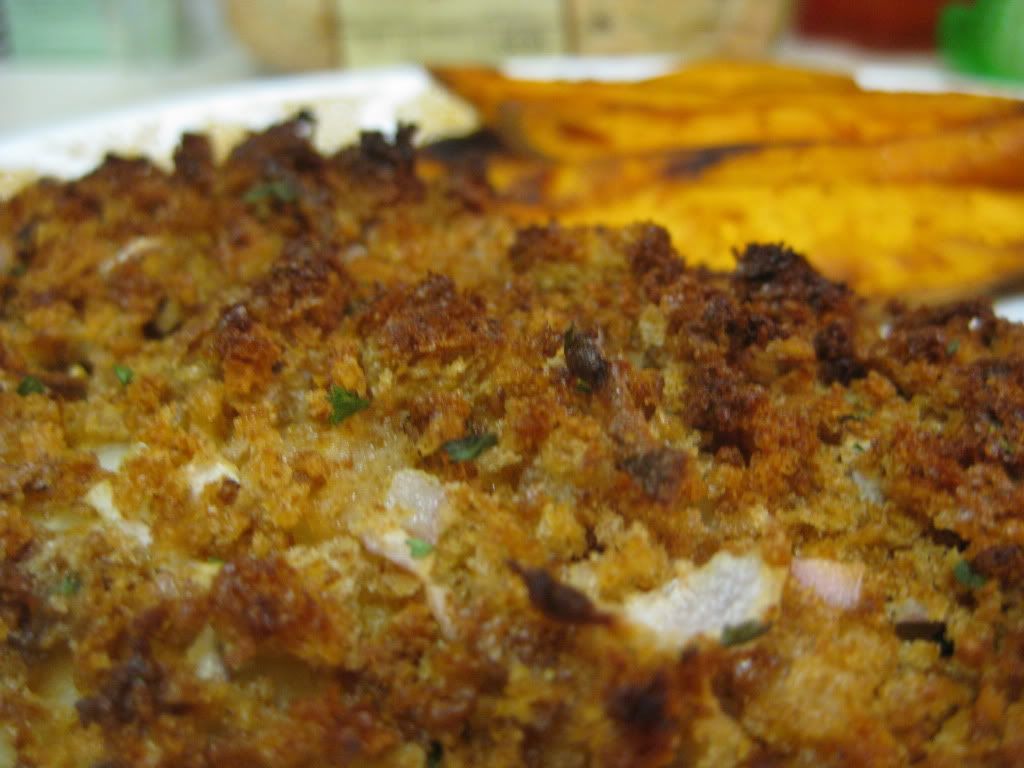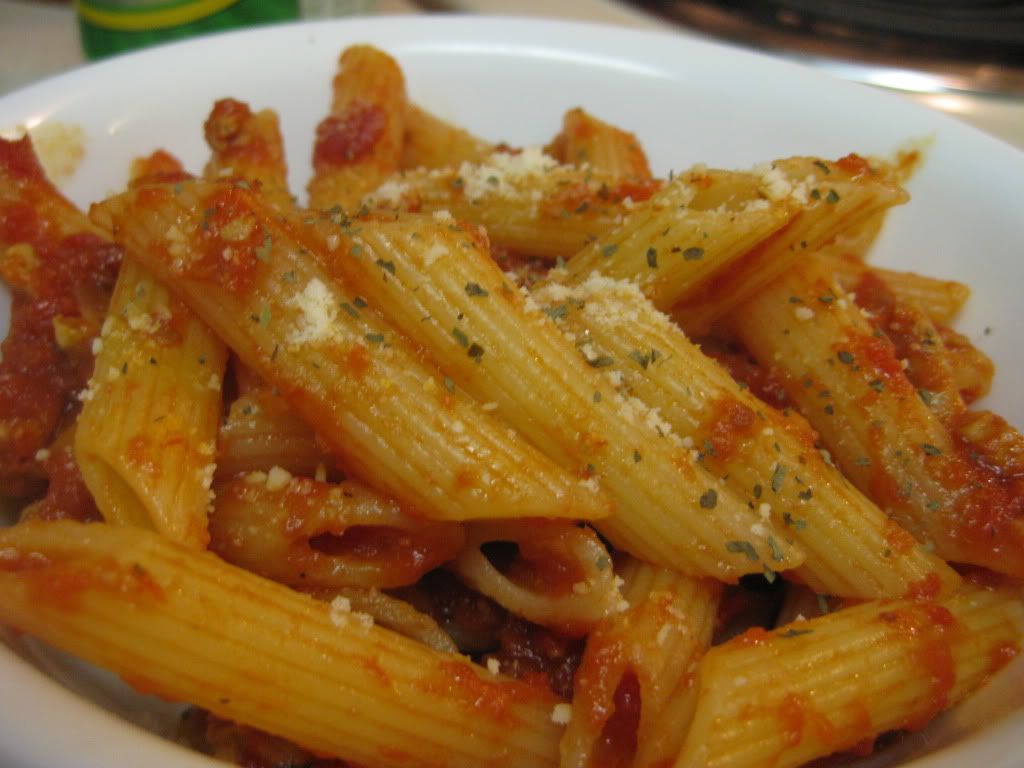Good evening everyone! Before we begin cooking tonight, I’d like to take a moment to share with you the process that brought me to tonight’s recipe. I was browsing the 2011 Annual Edition of Jamie Oliver’s magazine (“Jamie” $15.99, full of all of the recipes from 2011’s issues) when I came across a recipe for breaded cod and sweet potato fries. A quick peruse of the ingredients and process led me to believe this would be a solid recipe… but some part of me knew it wasn’t going to be quite good enough. Why? Well, back in August of 2010, I made
THIS breaded cod recipe, which has set the benchmark for all other breaded cod dishes to measure up to. While this doesn’t mean I will not try another variant of breaded cod, it does mean that any dish I contemplate taking on has lofty expectations to live up to.
The beauty of Jamie Oliver’s recipes is that they are very easy, usually great tasting and are always health conscious. The downfall is that sometimes, they’re a little too simplistic in flavoring. Jamie loves to have the natural flavors of a dish shine through, which was the concept behind his breaded cod recipe. I prefer to give the cod a little nudge (it’s a fish that can really shine with a helping hand in my experience, on its own it’s simply ‘OK’). The only downside to my preferred breaded cod recipe? It’s an America’s Test Kitchen recipe, which, if anyone watches the show or has tried ATK’s recipes you know that healthy is usually the fourth or fifth priority on their list.
So, I decided to meet in the middle. Using Jamie’s inspiration to keep everything healthy, I decided to see if I could adapt the original breaded cod recipe – the one that set the bar so very high back in 2010 and try to trim some calories without compromising the overall flavor.
The Recipe: Light & Crispy Oven Fried Cod
An adaptation of 8/26/10 recipe: Super Crispy Oven Fried Cod
(Changes notated with an *, see corresponding note below for explanation)
What You’ll Need:
4 Slices 100% Whole Wheat Sandwich Bread*
1 Tablespoon Vegetable Oil**
2 Teaspoons Dried Parsley
1 Small Shallot (Minced)
¼ Cup All Purpose Flour – Plus 5 Additional Tablespoons
2 Large Eggs
3 Tablespoons Light Mayonnaise***
½ Teaspoon Paprika
¼ Teaspoon Cayenne Pepper
2 Cod or other whitefish fillets
* Originally 4 slices of high quality white sandwich bread.
** Originally 2 tablespoons of butter. The butter was in place to help brown the breadcrumbs in the early stages. Vegetable oil will do this task as well, but only will require half of the amount and will lower the calories at the same time.
*** Originally “regular” mayonnaise.
The Recipe: Oven Baked Sweet Potato Fries
Original Recipe Found In: Jamie Magazine Annual Edition (2011)
What You’ll Need:
2 Medium Sweet Potatoes (Scrubbed clean, cut lengthwise into 8 wedges)
½ Teaspoon Smoked Paprika
1 Tablespoon of Olive Oil
TO MAKE THE SWEET POTATO WEDGES:
Preheat your oven to 400 degrees. If you want to make this recipe alongside the cod you can choose to cook these wedges in a toaster or convection oven or simply put them in your 425 degree oven about 15 minutes ahead of the cod.
Toss the wedges in a roasting pan with the olive oil, paprika and a pinch of salt and pepper. Place the roasting pan (or transfer the wedges to a baking sheet – whatever works best for your oven) in the oven and cook for 30 to 40 minutes or until the wedges are golden and have softened. If you’re cooking the wedges in the same oven as the cod, you’ll have to reduce the cooking time to about 25 to 35 minutes to adjust for the slightly higher temperature.
TO MAKE THE BREADED COD:
To begin, preheat your oven to 350 degrees.
Tear your bread into larger sections and then place those into a food processor along with the vegetable oil and a pinch of salt and pepper. Pulse the mixture for about 8 to 10 seconds until everything is coarsely ground. (Only pulse for about 1-2 seconds per time, so ideally you’re looking for about 8 ‘pulses’ you don’t want to over grind the bread).
Transfer this bread mixture to a rimmed baking sheet and bake for 15 minutes, or until the bread crumbs have become a deep golden brown and are slightly crispy. Be sure to stir the mixture every 5 minutes to avoid over cooking any portion of the breadcrumbs. Once the crumbs have turned golden brown, transfer them to a large plate and add the shallot and parsley to the mixture, then set aside.
After removing the breading, increase your oven temperature to 425 degrees.
Add the ¼ cup of flour on a second plate and place it next to your breadcrumb covered plate. Finally, in a large bowl, whisk the eggs, mayonnaise, paprika, cayenne and a pinch of black pepper. Stir until blended. Next, add the extra five tablespoons of flour and stir this into the mixture. Your mixture will become very thick here – rather than a typical ‘wash’ that the eggs serve as during normal breading, this mixture almost becomes a batter. It will be messy – so be prepared to have a wet towel handy to clean up.
Place a wire baking rack on top of a rimmed baking sheet and give it a quick hit of cooking spray. Carefully dry off your fillets to make sure that any moisture is off of the fillets. I’ve said it once and I’ll say it again – you HAVE to make sure the moisture is almost completely gone before you try any breading recipe. Moisture is the undercover agent that will sabotage the recipe’s mission if left ignored. Lightly season the fillet with a pinch of salt and black pepper.
Arrange your plates in bowls in the (surely famous by now) assembly line style. Start with the plate of flour, place your egg/batter mixture next and end with the plate of breadcrumbs. Begin by dredging your fillets in the flour mixture, making sure to shake off any excess. Next, either dip the fillets into the egg/batter of spread the batter across the fillets with a knife or spoon. Normally, you’d allow the egg wash excess to drip off – but in this case, that mixture won’t be dripping so just make sure to cover all the sides with an equal amount of batter. Finally, roll the fillet into the breading, making sure all of the sides are evenly covered with breadcrumbs.
Place the breaded fillets on the wire baking rack and then into the oven. Allow the fillets to cook for 18 to 25 minutes, or until an instant read thermometer gives a reading of 140 degrees at the thickest part of the fillet. Serve and enjoy!
The Results:
This recipe still stands as the pinnacle of breaded cod. The amazing flavor of the batter combines with the beautifully crunchy crust. The shallot & parsley adds an amazing dimension to these flavors – as we said in the opening, this is the benchmark that all other breaded cod recipes have to live up to. Much like the original, this dish continues to be the best cod recipe we’ve made to date. The small tweaks I made to the recipe had very little impact on overall flavor. Losing the butter didn’t seem to impact the final taste at all and switching the breading to whole wheat only changed the flavor profile slightly. All in all, I think we found a good way to blend Jamie’s healthy eating principles with ATK’s great flavor.
Oh and the sweet potato wedges? They’re oven roasted sweet potatoes. You cannot go wrong with oven roasted sweet potatoes. Make them, enjoy them. End of story.
That’s all we have for you this evening. Maggie is taking to the kitchen tomorrow night to try her had a new flavor blending. It’s one that has stood the test of time, but has never been tested in our kitchen. Tune in tomorrow night to see what she has cooking. Until then,
~Cheers
